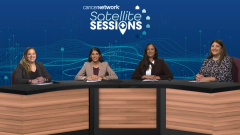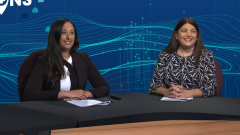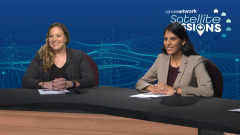
RRMM: Access to Bispecifics and CAR T-Cell Therapy in Satellite Campuses
A brief conversation on the introduction and use of bispecifics and CAR T-cell therapies in satellite campuses for patients with relapsed/refractory multiple myeloma.
Episodes in this series

Transcript:
Krina K. Patel, MD, MSc: I was going to come back to you and mention that we’re not doing these in the satellites. We are hopeful that we can one day very soon, so that the main campus is not just completely falling over. What do we need to do to be able to actually get it, and what kind of support are you going to need to be able to do this in the satellite?
Tejo N. Musunuru, MD: For now, I usually stop at that second or third line of treatment. Then, that’s where our wonderful colleagues kind of help out, take over the patients, and get them onto these clinical trials. I see these patients on the inpatient side with the toxicities and everything. There are a couple of challenges in the satellite locations. One is the lack of investigation pharmacy because most of these drugs are still in the investigational field. So that’s one thing. The second thing is the infusion center and the timings. If they have a reaction, where do we send these patients? We can’t just send them to let’s say another hospital that doesn’t have any experience with the bispecifics or the CAR [chimeric antigen receptor] T cells. Here, at the main campus, if we start doing this as an outpatient and someone has a reaction, they can just go to the [emergency department] and get admitted to the same hospital where everyone has experience with these. Though for us, if anyone has a reaction to this or a CRS [cytokine release syndrome], we’ll have to send them to one of the other hospitals that are nearby who probably have zero experience with bispecifics or CAR T-cells. They probably heard about the name, but nothing more to even recognize CRS, or they may not have the availability of toci [tocilizumab] or steroids. When do you give steroids? We have specific protocols as to when you can give steroids or when you can’t give steroids. Those are all the major challenges that I see in the satellite locations to use these drugs. We would love to do that. But right now, these are all the different challenges.
Krina K. Patel, MD, MSc: I was going to ask you about dara [daratumumab (Darzalex)]. Because this happened with dara, too, in the community. When we first started the infusion reactions, people were freaking out and now it’s like everyone can give it like water. So do you think, since the bispecifics have most of their CRS in the first 1 to 2 doses, if we did the first cycle at the main campus that could be our first transition potentially for the rest of it to be done? That could be a way. A lot of us wear administrative hats so that’s why I’m bringing this up.
Tejo N. Musunuru, MD: That’s exactly right. I think that’s how we become innovative to get these drugs out from the main campus. Because, as I mentioned, once they’re used to the satellite locations, they just don’t want to go to the main campus just for a variety of logistic reasons. So they would love to come back, and we’d love to have that too because if the real risk is with the first 2 cycles and you do that, the risk part is done. We can do it at the satellite location. So that’s one way of mitigating the risks.
Krina K. Patel, MD, MSc: Perfect.
Transcript edited for clarity.
Newsletter
Stay up to date on recent advances in the multidisciplinary approach to cancer.






















































































